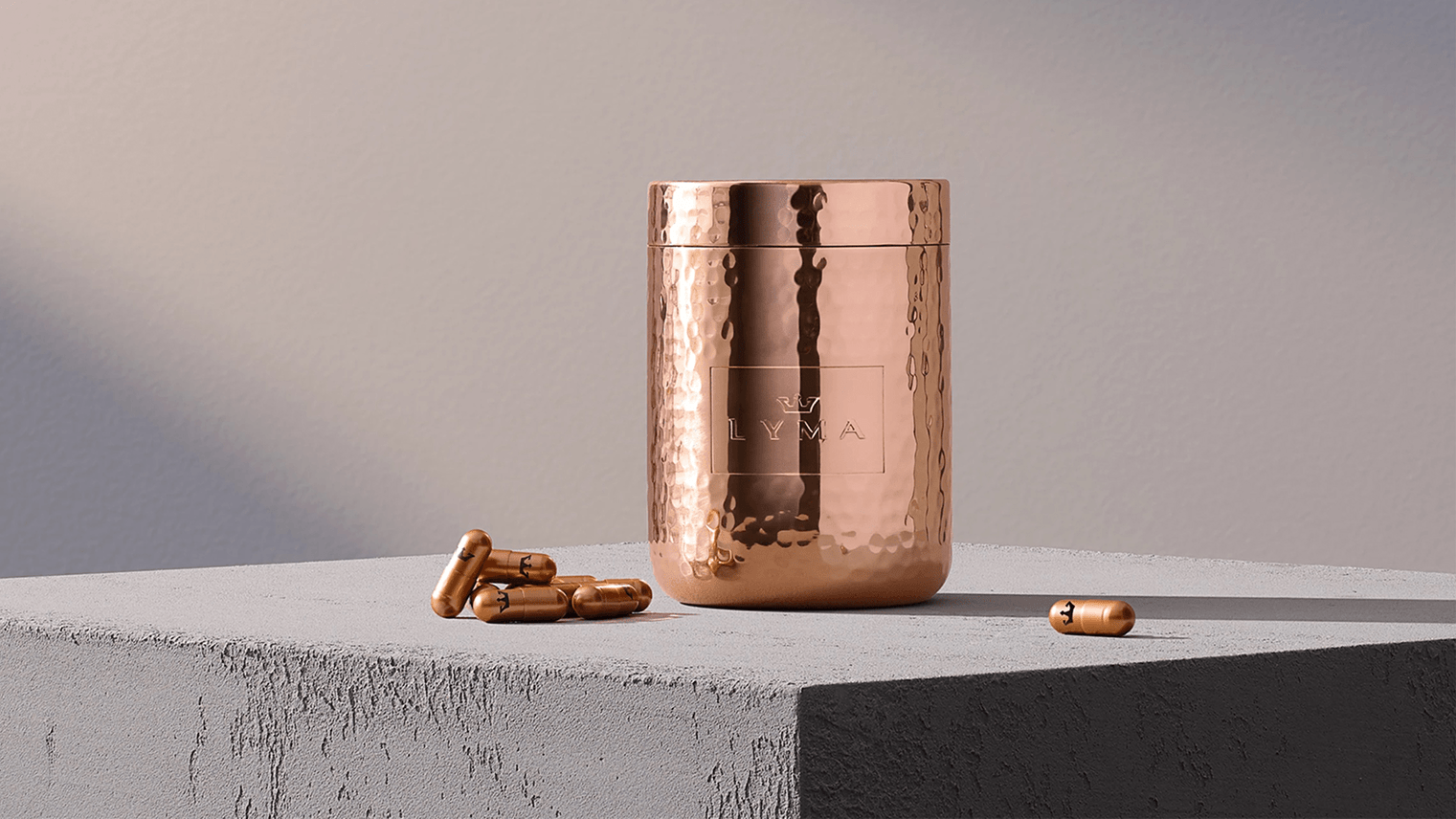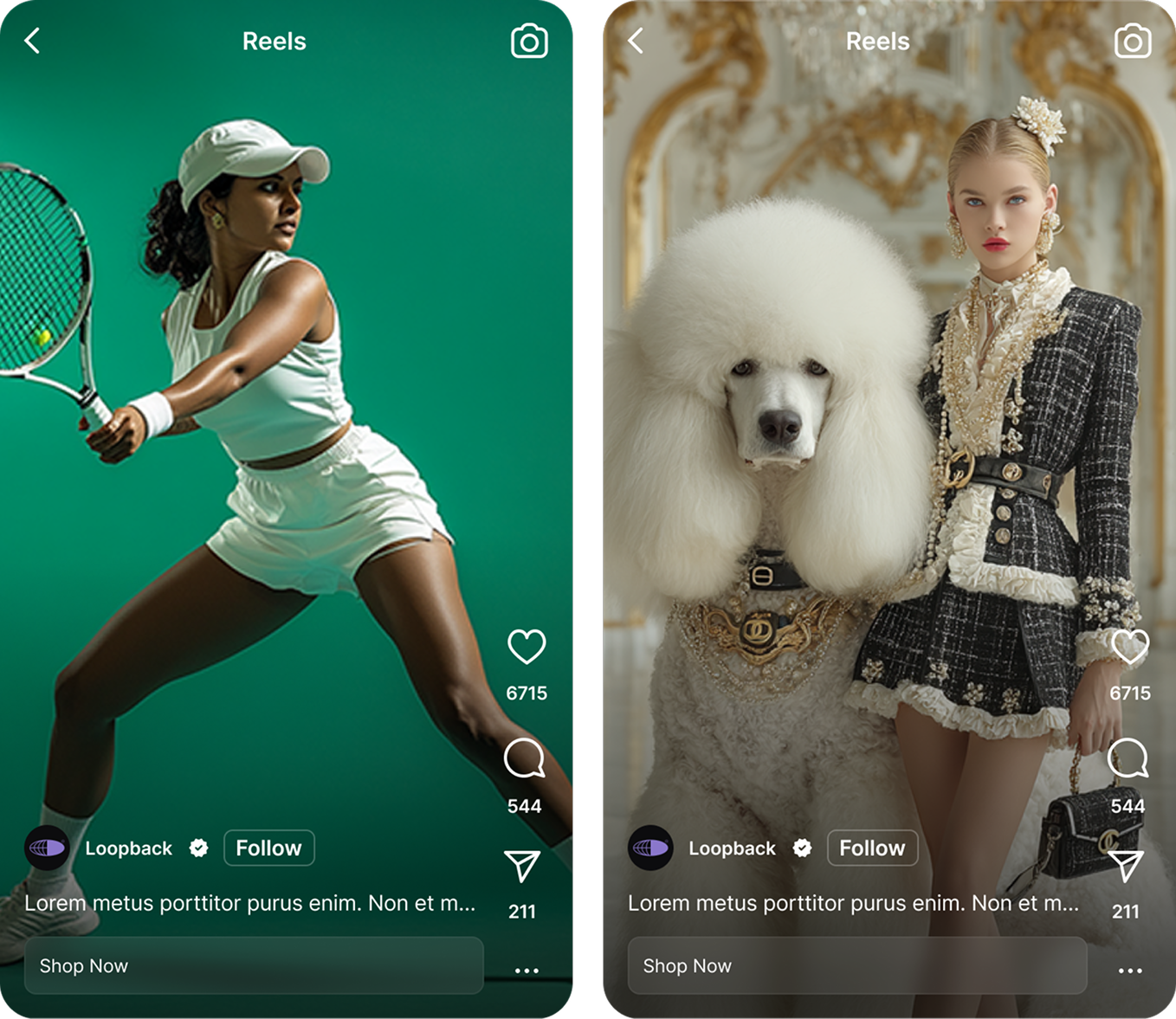Master 2025 Influencer Campaigns: Proven ROI Tactics

Why This Post Matters
Most brands don’t fail at influencer marketing because creators don’t work. They fail because their campaigns are still run like it’s 2018, built for awareness, not performance.
The truth: influencer marketing is no longer about reach. It’s about revenue.
In 2025, the fastest-scaling DTC brands are those treating influencer campaigns with the same rigor as Meta Ads or Google Ads. That means predictive ROI before you spend, automated execution during campaigns, and real-time revenue attribution after.
This post breaks down the proven ROI tactics that top operators use to master influencer campaigns in 2025, including:
- How to calculate and forecast RoAS before launch
- The 20:20:20 rule for scaling content and audiences
- Why Spark Ads and Partnership Ads are outperforming brand creative
- The frameworks leading brands like Loop and Lyma Life use to scale with The Cirqle
- A repeatable system you can apply tomorrow
If your influencer program isn’t run like performance media, you’re leaving money, and growth, on the table.
The Market Reality in 2025
Influencer marketing has moved from experimental to essential. What was once a PR tactic for brand awareness has now become a primary growth engine for DTC brands, and the numbers back it up.
- $32.55B industry. By 2025, influencer marketing is projected to reach $32.55 billion (Influencer Marketing Hub), growing faster than nearly every other digital channel. This isn’t niche anymore, it’s mainstream, high-stakes marketing spend.
- Budgets are growing, but with strings attached. 71% of DTC brands are increasing their influencer budgets in 2025. But that growth is conditional: marketers will only double down when they can prove ROI. Vanity metrics like likes and impressions no longer unlock budget. CAC, CPA, and RoAS do.
- Creators outperform brand ads. Meta and TikTok’s own performance data shows creator-led ads consistently out-deliver traditional brand creative. Consumers trust creators more than polished ads, leading to higher CTRs, lower CPAs, and stronger RoAS.
The truth is this: the performance team is now in charge of influencer marketing. Creators are no longer “nice-to-have” storytellers, they are your most efficient, highest-performing media unit, with impact measurable across the funnel.
We’ve seen it firsthand with Lyma Life, the premium wellness brand. By leveraging The Cirqle’s predictive RoAS forecasts, Lyma identified which creators were most likely to convert high-value customers before they ever signed a contract. This approach de-risked their investment, optimized spend, and helped them scale with confidence in a luxury category where every dollar of CAC matters. Explore the case study.

But here’s where many brands still stumble: scaling creators like performance media requires infrastructure. Without predictive data, automated workflows, and real-time attribution, campaigns collapse under their own weight.
That’s why platforms like The Cirqle exist, bringing the same level of control, automation, and accountability that growth teams already expect from Meta Ads Manager or Google Ads.
1. Start With Predictive ROI: RoAS Forecasts
For too long, influencer campaigns were run on guesswork. Marketers picked creators based on who looked like a “fit,” how many followers they had, or who a competitor had worked with. Sometimes it worked, often it didn’t, and budgets were wasted because there was no way to predict outcomes before committing spend.
That approach doesn’t cut it in 2025. Performance marketing demands predictability. The very first question growth leaders now ask is:
👉 “What’s the expected return on this spend?”
This is where The Cirqle has redefined how influencer marketing works.
- Every creator profile is tagged with a predicted RoAS score. Instead of vanity metrics, you get hard projections built on first-party sales data.
- You see CAC, CPA, and revenue potential upfront. Before a single brief is sent, you know the likely economics of that creator partnership.
- Risk is eliminated. No more gambling on whether a $5K activation drives sales, you know if it’s forecasted to return $15K (3:1 RoAS) or barely break even.
The impact is profound. Brands can build campaigns the way they would a paid media plan: allocating budget based on expected returns, benchmarking performance against other channels, and doubling down on what works.
The takeaway: In 2025, predictive ROI isn’t a luxury, it’s table stakes. If your influencer platform doesn’t forecast returns before you spend, you’re not running performance marketing. You’re gambling.
2. Run Always-On Campaigns, Not One-Offs
One of the most common mistakes brands still make in 2025 is treating influencer marketing like a seasonal campaign. They activate a handful of creators for Black Friday, pause for months, then scramble again before the next product launch.
That’s not performance marketing, that’s a stunt.
Performance channels work because they’re always on. Paid search, paid social, email, and affiliates run continuously, feeding the funnel day after day. Influencer marketing is no different. The brands that win have shifted from bursts to always-on creator programs that act as a sustainable growth engine.
Here’s what that looks like in practice:
- Retainers with proven performers. Keep your top creators on monthly contracts to ensure a steady stream of authentic, high-performing content.
- Continuous testing. Rotate in new creators each month to refresh the mix and identify your next top performers.
- Ongoing amplification. Feed Spark Ads and Partnership Ads into Meta and TikTok Ads Manager so that creator content isn’t just organic, it’s fueling acquisition at scale.
This isn’t theory, it’s execution. Lyma Life, for example, built a creator engine using The Cirqle that continuously tested new influencers while keeping their top-performing partners locked in on retainers. Instead of starting from scratch every quarter, they built momentum, compounding performance over time while keeping CAC stable in a premium category. See case study.
The takeaway: Always-on > one-off. Treat influencer marketing like a system, not a stunt. The brands that scale into the hundreds of millions run creators the same way they run paid media, predictable, repeatable, and ongoing.
3. Apply the 20:20:20 Rule
When it comes to scaling influencer marketing, the secret isn’t chasing bigger creators, it’s creating more test surfaces. The wider your testing surface area, the faster you find winning combinations of creators, content, and audiences.
That’s where the 20:20:20 rule comes in. It’s the framework top performance teams use to systematically scale creator-driven acquisition:
- 20 creators → Build breadth across niches, geographies, and audience profiles. This reduces dependency on a single creator and ensures diversification.
- 20 creatives per creator → Give the algorithm enough options to optimize. Short-form video, carousels, hooks, angles, volume is what drives discovery of true winners.
- 20 lookalike audiences → Maximize reach by testing creator-driven targeting at scale. The right audience pairing can make a mediocre creative perform, or turn a great one into a breakout.
Do the math: 20 × 20 × 20 = 8,000 testable combinations.
The challenge? No team can manage that volume manually. That’s why The Cirqle makes the 20:20:20 rule programmatic:
- Creator discovery is automated with AI-powered filters and RoAS forecasts.
- Contracting, briefing, and content approvals are streamlined in-platform.
- Paid amplification flows directly into Meta and TikTok Ads Manager with ad permissions secured automatically.
The takeaway: Scale isn’t about betting on a handful of “big names.” It’s about systematically testing thousands of micro-combinations until the algorithm finds your winners. With the right infrastructure, what looks unmanageable becomes repeatable, predictable, and scalable.
4. Turn Organic Content Into Paid Media
Too many brands stop at the organic post. They pay a creator, get a piece of content, watch it perform in-feed for a few days, and then let it die.
Here’s the truth: organic reach is a bonus, not the strategy.
The most successful brands in 2025 don’t see creator content as the end product, they see it as the raw material for paid campaigns. By turning influencer UGC into Spark Ads and Partnership Ads, they unlock the real performance lever:
- Higher CTRs and lower CPAs than brand creative. Creator ads look and feel native, blending into the feed in ways brand assets can’t.
- The trust factor. Content carries the social proof of a real creator while still giving you the full targeting power of paid media.
- Infinite scale. Once you find a winning creator + asset combo, you can pump budget into it just like a top-performing ad.
The Cirqle makes this seamless. The platform automates ad permissions and pushes content directly into Meta and TikTok Ads Manager, removing bottlenecks that normally kill momentum.
Take Secret Sales as an example: by amplifying creator-generated content through The Cirqle, they built full-funnel campaigns that delivered measurable conversions and outperformed their BAU ads on efficiency. Instead of one-and-done organic posts, they turned creator content into an always-on acquisition engine.
The takeaway: Don’t treat organic as the finish line. The real ROI comes when creator content is plugged into your paid machine, scaled, and optimized just like any other high-performing ad unit.
5. Measure What Matters: RoAS, CAC, LTV
The golden rule of growth marketing still applies: if you can’t measure it, you can’t scale it.
And yet, too many influencer programs are still judged on vanity metrics, reach, impressions, engagement. They might look good in a quarterly deck, but they don’t convince a CFO to unlock more budget.
Performance teams know better. What wins budget, and drives real growth, are hard metrics:
- RoAS by creator. Who’s driving profitable revenue vs. who’s just burning budget?
- Conversion tracking across touchpoints. Not just organic posts, but Spark Ads, Partnership Ads, and every click-to-cart moment.
- CAC and CPA benchmarks. How does creator-driven acquisition stack up against Meta Ads or Google Ads?
- LTV of acquired customers. Which creators bring in buyers who stick, subscribe, or come back for more?
With The Cirqle, all of this is tracked in real time. No manual spreadsheets, no guesswork, just instant, reliable performance data.
Example: Spend $30K on creators and generate $90K in sales? That’s a 3:1 RoAS. With The Cirqle, that calculation is done for you, attribution is clean, and reporting is clear enough to drop straight into your board deck.
The takeaway: Vanity metrics don’t scale. If you’re not holding creators accountable to RoAS, CAC, and LTV, you’re not running performance marketing, you’re running a PR campaign with prettier pictures.
6. Retain and Compound With the Creator Flywheel
The best DTC brands don’t treat influencer marketing as a series of disconnected campaigns. They build creator flywheels, systems that compound returns over time, just like paid media or lifecycle marketing.
Here’s what the flywheel looks like in practice:
- Discover → Use predictive data and RoAS forecasts to select creators most likely to drive profitable sales.
- Activate → Brief, contract, and launch campaigns seamlessly with automation handling contracts, approvals, and payments.
- Amplify → Take the best-performing organic content and scale it as Spark Ads and Partnership Ads across Meta and TikTok.
- Measure → Track sales, RoAS, CAC, and LTV in real time with reliable attribution.
- Repeat → Keep top-performing creators on retainers while continuously testing new partners to keep the mix fresh.
📊 Visual suggestion: A circular “Creator Performance Flywheel” diagram showing how each step feeds into the next.
The truth: unlike one-off influencer pushes, a flywheel compounds. Each cycle strengthens the next:
- Creators get better at telling your story.
- Paid media algorithms get smarter with more inputs.
- RoAS increases and CAC drops as the system matures.
That’s why brands like Lyma Life rely on The Cirqle to systematize their influencer programs. By embedding the flywheel into their growth engine, Lyma reduced risk, scaled predictably, and drove high-value customer acquisition in a premium category where every conversion matters. See case study.
The takeaway: Treat influencer marketing as a system, not a stunt. One-off bursts create short-lived spikes. A flywheel compounds into long-term, predictable growth.
Conclusion: From Guesswork to Predictable ROI
Influencer marketing in 2025 isn’t optional, it’s one of the fastest-growing and most profitable growth channels available to DTC brands. But winning in this channel requires more than shipping product and tracking likes. It requires treating influencer marketing with the same rigor, accountability, and scale as paid media.
That’s exactly what The Cirqle delivers. With our platform, brands move from guesswork to predictability:
- Forecast ROI before launch with creator-level RoAS predictions
- Cut setup time by 80%+ through automated workflows
- Turn influencer campaigns into true performance channels, not PR stunts
- Scale seamlessly across organic posts, Spark Ads, and Partnership Ads
- Measure in real time with revenue-level attribution and clear CAC/LTV benchmarks
The truth is simple: if you’re still running influencer campaigns in spreadsheets, you’re not running performance marketing, you’re running chaos.
The next wave of breakout DTC brands will be built on systems, not stunts. They’ll treat creators as the highest-performing ad unit in their mix, powered by predictive data and automated execution.
👉 Ready to see how The Cirqle can transform your influencer strategy? Schedule a demo today.
FAQs
Q: How do I calculate ROI for influencer campaigns?
ROI in influencer marketing comes down to the same metrics used in any performance channel:
- RoAS (Return on Ad Spend): Revenue ÷ Spend
- CAC (Customer Acquisition Cost): Spend ÷ New Customers Acquired
- LTV (Lifetime Value): Revenue generated by those customers over time
The Cirqle automates these calculations in real time, giving you clean attribution without the manual guesswork.
Q: What is the 20:20:20 rule?
The 20:20:20 rule is a framework for scaling influencer campaigns by multiplying your testing surface:
- 20 creators → diversify across niches, geographies, and demographics
- 20 creatives per creator → generate enough content variety to let algorithms find winners
- 20 lookalike audiences → maximize paid reach with creator-driven targeting
20 × 20 × 20 = 8,000 testable combinations, a volume impossible to manage manually, but programmatic with The Cirqle.
Q: How does The Cirqle forecast RoAS before campaigns?
By analyzing first-party performance data across 1.2M+ verified creators, The Cirqle applies predictive modeling to estimate RoAS, CAC, and CPA before you commit a dollar. This means you can allocate budget like you would in Meta Ads Manager, with clear expectations of performance upfront.
Q: Why do Spark Ads and Partnership Ads matter?
Because they’re the highest-performing ad units available today. Creator-led ads:
- Deliver higher CTRs and lower CPAs than in-house brand creative
- Blend native, trusted creator content with full paid targeting capabilities
- Scale infinitely once a winning asset is identified
The Cirqle streamlines Spark and Partnership Ad permissions, turning organic UGC into performance-ready ad units without bottlenecks.
Q: How do top brands like Lyma Life or Lookfantastic scale influencer marketing?
They don’t treat influencer marketing as one-off bursts. They use The Cirqle to build creator flywheels, systems where each cycle compounds on the last: discover the right creators, activate them efficiently, amplify content through Spark Ads, measure real-time sales impact, and repeat with top performers on retainer.
This approach has helped brands like Lyma Life de-risk creator investments while scaling high-value customer acquisition in a premium category, and Lookfantastic to systematize large-scale campaigns across multiple markets.
Get started with The Cirqle today.
Give your team the power and speed they need to find the right partners and grow your brand.
%201.avif)






